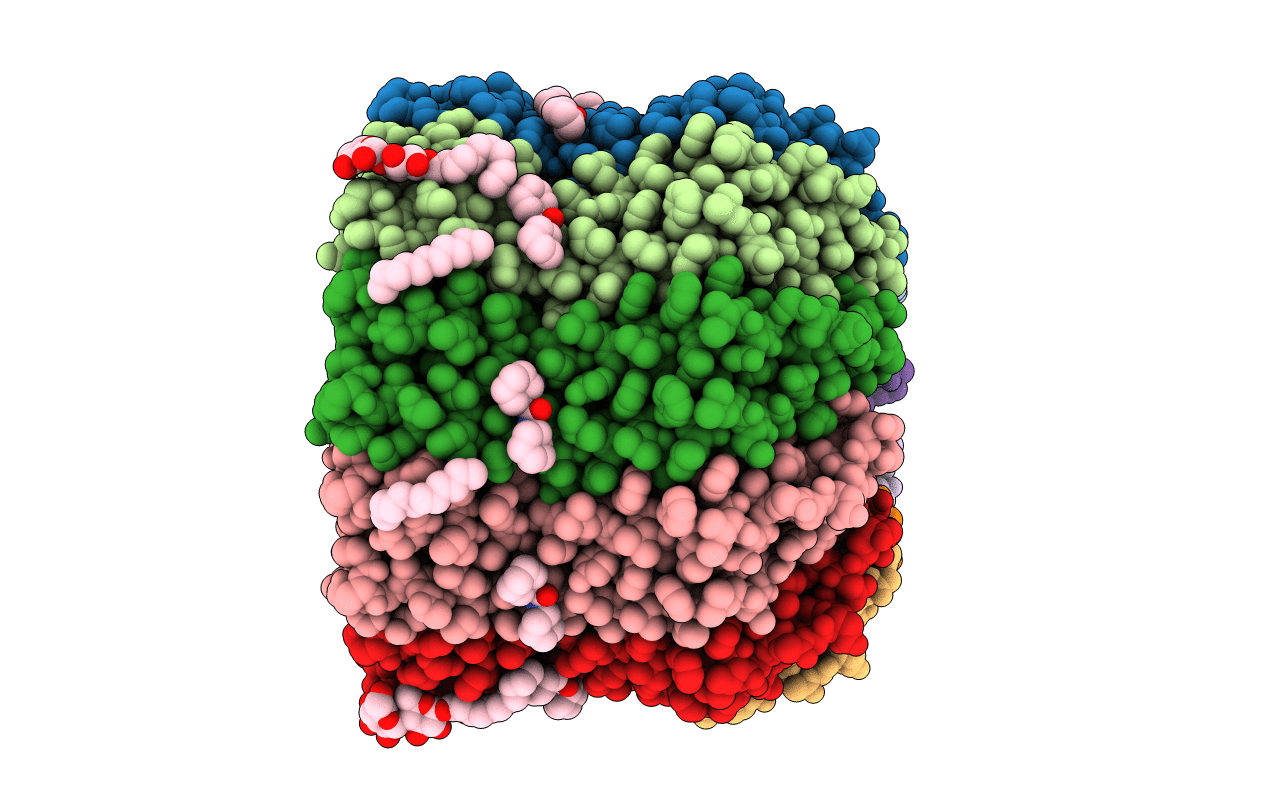
Deposition Date
2005-12-15
Release Date
2006-12-05
Last Version Date
2024-10-16
Entry Detail
PDB ID:
2DB4
Keywords:
Title:
Crystal structure of rotor ring with DCCD of the V- ATPase from Enterococcus hirae
Biological Source:
Source Organism:
Enterococcus hirae (Taxon ID: 1354)
Host Organism:
Method Details:
Experimental Method:
Resolution:
2.40 Å
R-Value Free:
0.23
R-Value Work:
0.22
R-Value Observed:
0.22
Space Group:
P 21 21 21


